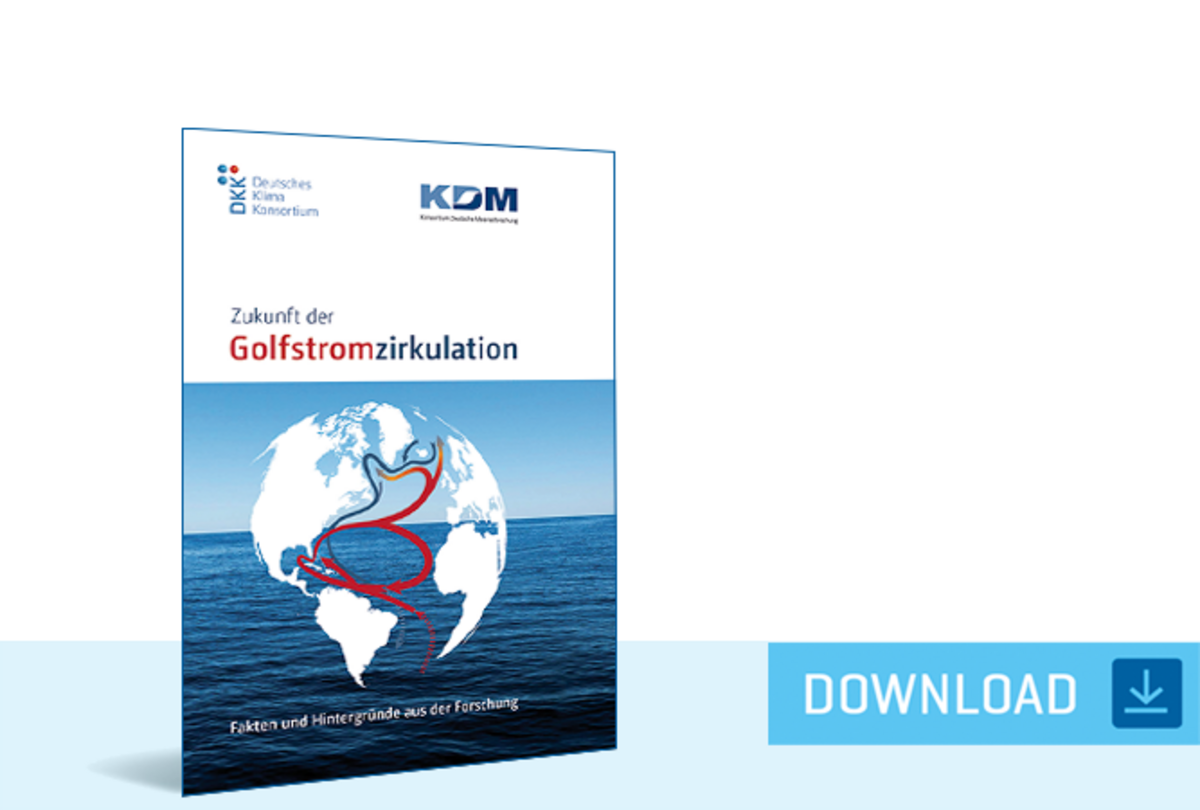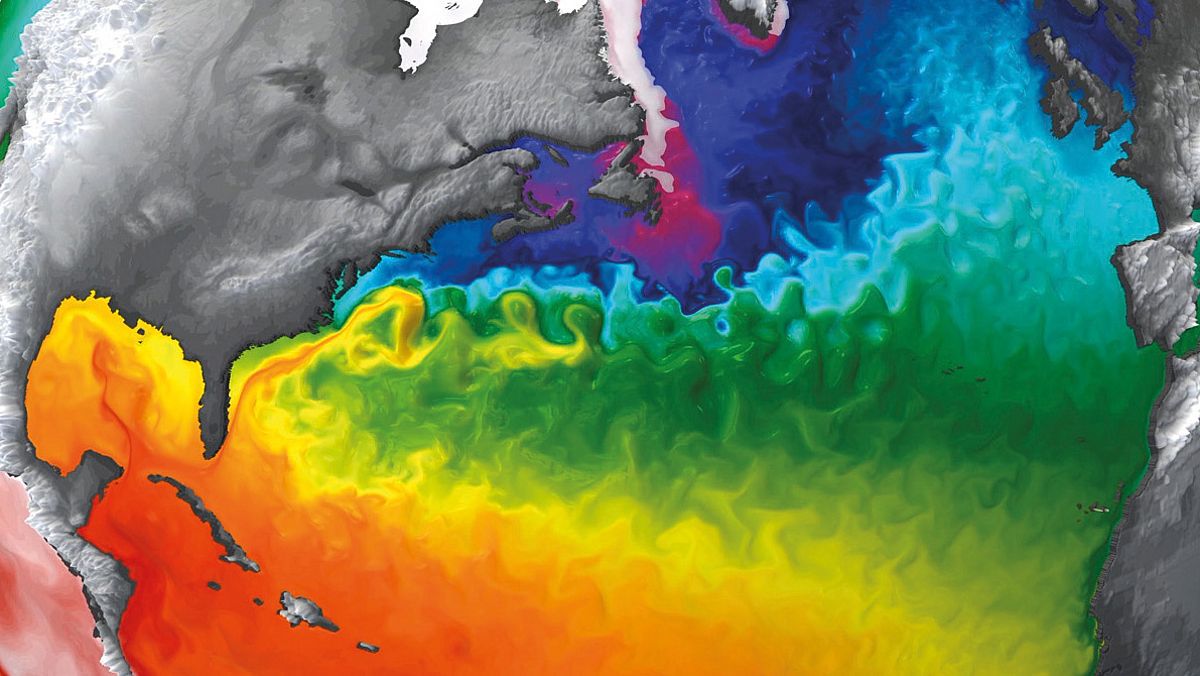
The Gulf Stream and Atlantic Circulation
An example of interdisciplinary research at GEOMAR
The Gulf Stream is one of the strongest ocean currents in the world. As part of the great Atlantic overturning circulation, it plays an important role in the climate of northwestern Europe with its northward transport of heat and salt. Models predict that it could weaken if global warming causes the Greenland ice sheet to continue melting, reducing the salinity of the North Atlantic. However, many questions remain about the possible consequences of such a weakening. At GEOMAR, fluctuations and the changes in the Atlantic circulation resulting from global warming are studied using interdisciplinary methods and research approaches.
In order to better understand the different aspects of these large-scale circulation patterns, expertise from the fields of Maritime Meteorology, Paleo-Oceanography, Physical Oceanography and Ocean Dynamics is integrated across disciplines: Proxy data studied in paleo-oceanography reveal that large-scale current patterns in the Atlantic have changed repeatedly in the past, with significant effects on global climate. Since many of these changes were related to meltwater inflow into the North Atlantic, the question arises whether melting processes in Greenland associated with today's climate change can lead to changes in the circulation. Using measurement results from physical oceanography from the subpolar and tropical Atlantic, it will be determined whether such changes are already taking place. The measurements from the Atlantic also provide crucial data for the calibration of high-resolution model simulations of ocean dynamics. The models make it possible to put the different and limited measurements into a physically consistent overall picture. The aim is to develop forecasts of how and with what intensity and variability the large-scale ocean currents in the Atlantic will develop in the future.
How much does melting Greenland ice weaken the Atlantic heat pump and the Gulf Stream?
One of the biggest unknowns related to current climate change is the continuosly increasing input of glacial meltwater into the ocean. The Greenland ice sheet, for example, holds an amount of freshwater equivalent to about seven metres of global sea-level rise. In the ocean, the freshwater also reduces the salinity and thus the density of the seawater. Melting ice masses thus ultimately influence the North Atlantic Current, an extension of the Gulf Stream. This "heat pump" still provides Europe with a mild climate even in relatively high latitudes, but its fade-out would lead to considerable cooling.
For decades, GEOMAR has participated in international measurement campaigns to observe the strength and variability of the wind- and density-driven Atlantic overturning circulation, of which the North Atlantic Current is also a part. Elaborate studies with high-resolution ocean and climate models enable GEOMAR scientists to analyse the consequences of increased melting of the Greenland ice sheet on the ocean circulation more precisely, to put them into a larger context, to understand them more precisely through sensitivity calculations and to better predict them.
Studies conducted at GEOMAR indicate that the influence on ocean circulation has been underestimated in current climate models. In contrast to high-resolution simulations, the latter do not explicitly represent mesoscale ocean eddies from 10 to 100 kilometres. However, these eddies have a considerable influence on the circulation and distribution of meltwater. Thus, in model studies, a weakening of the heat pump and considerable cooling in the North Atlantic region occurs after only a few decades of massive melting.
The Atlantic Circulation of the Past

Research shows that the Atlantic circulation has reacted very sensitively and quickly to disturbances in its history, such as the freshwater input from melting Northern Hemisphere glacier ice at the end of the last ice age. Since freshwater is less dense than seawater, not as much deep water could be formed at that time. This caused the structure of the circulation to change and probably even collapse for a few hundred years about 17,000 years ago during a so-called Heinrich event (the collapse of the ice sheet covering Canada). This had dramatic consequences for the climate of the Northern Hemisphere. Should the Greenland ice sheet melt even faster in the future as a result of global warming, this could have negative consequences for the circulation and the Gulf Stream system.
Connections Between Ocean Models and Long-Term Observations
Long-term observations using moorings only provide a regional and temporal view of the ocean. Ocean models combine these into an overall picture. Since ocean models are based on fundamental laws of fluid mechanics and thermodynamics, this picture is physically consistent and provides an insight into the interaction of current systems and water masses. Because of the large number of ocean processes and driving factors such as wind, heat fluxes or precipitation at the atmosphere-ocean boundary layer that need to be considered, as well as due to the required resolution, such simulations are among the most complex model calculations and can only be carried out by high-performance computers.
One of the flagships among the ocean dynamics models is the high-resolution Atlantic model VIKING20X. In this model, velocities, temperatures and salinity are simulated in a three-dimensional grid with a mesh size of a few kilometres in the horizontal and 46 depth layers in the vertical over periods of the last 60 years. The Atlantic overturning circulation is one of the crucial core variables for understanding the ocean and its effects on climate and climate variability. It is calculated from the totality of ocean currents and indicates the strength of warm water masses flowing northwards at the surface and cold water masses flowing southwards at depth.


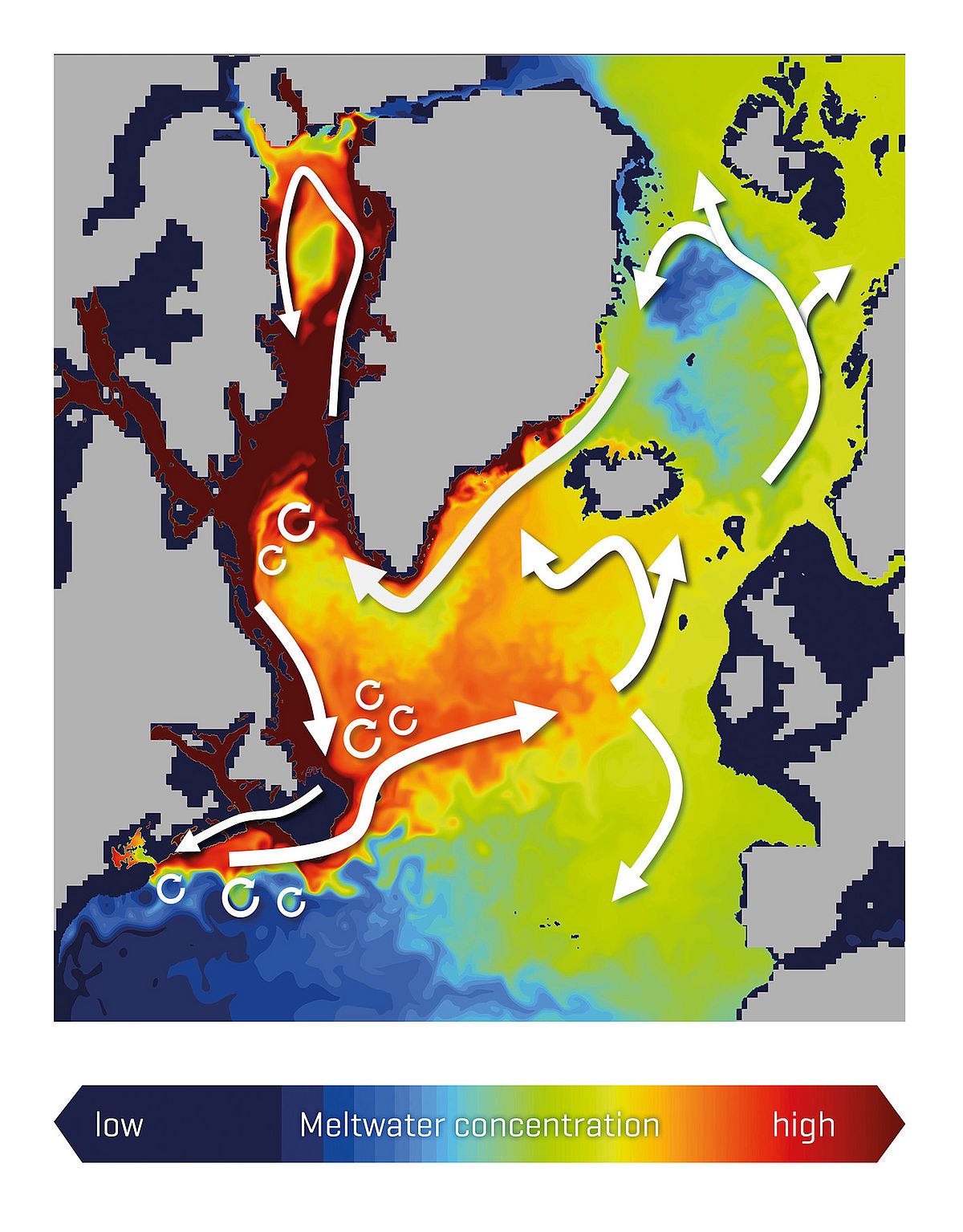
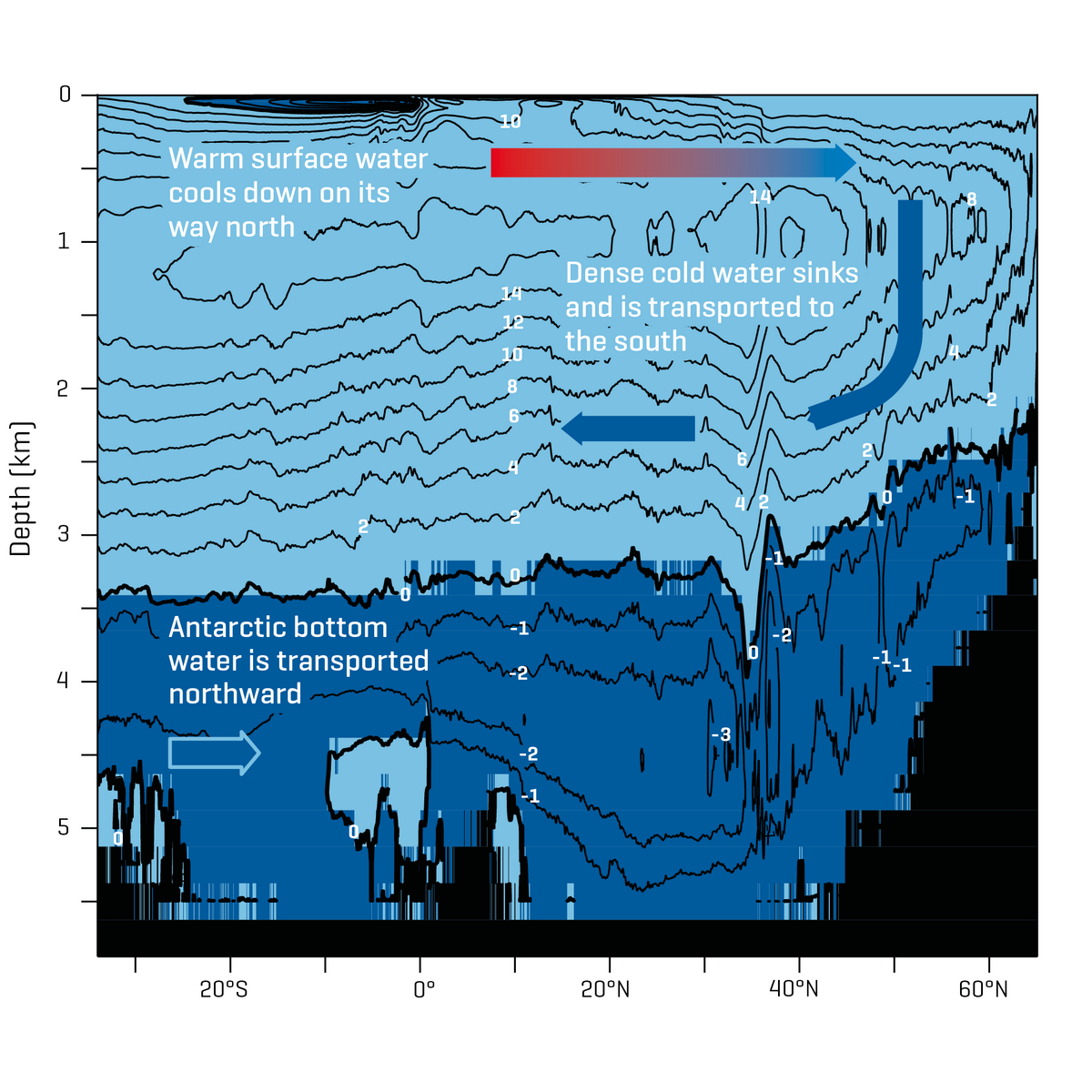
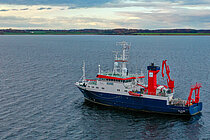

![[Translate to English:] Waves on the Sea](/fileadmin/_processed_/7/1/csm_southern-ocean_1cc8432416.jpg)
